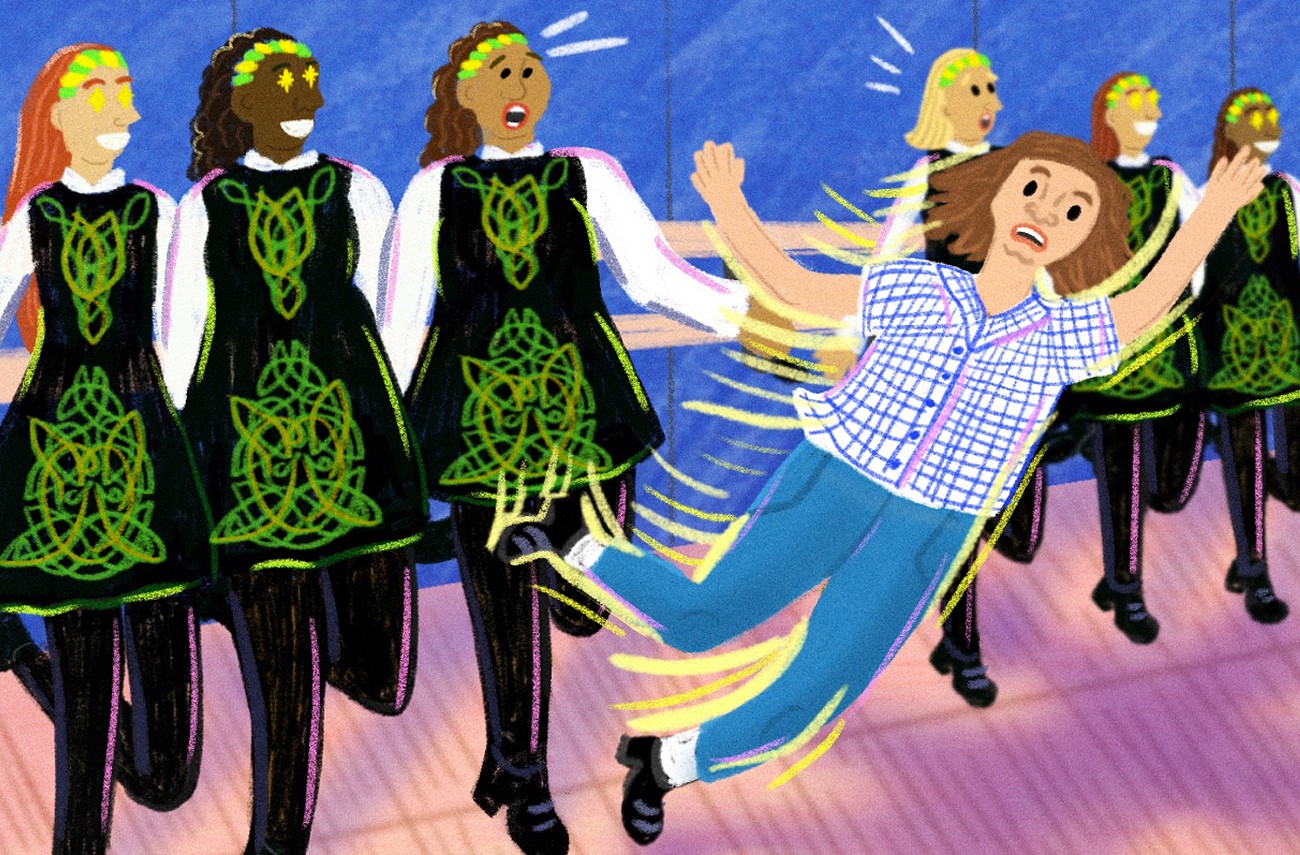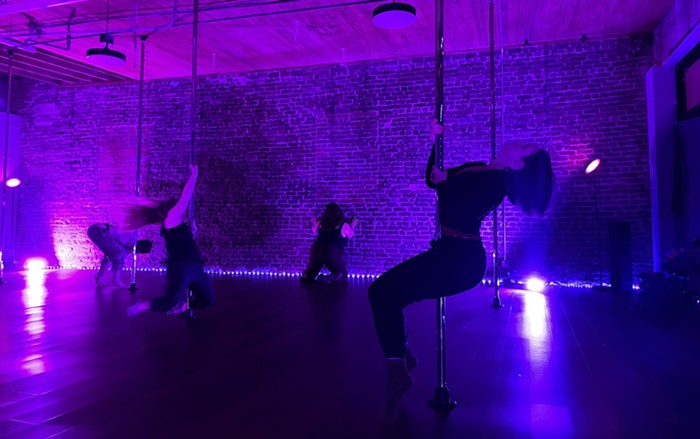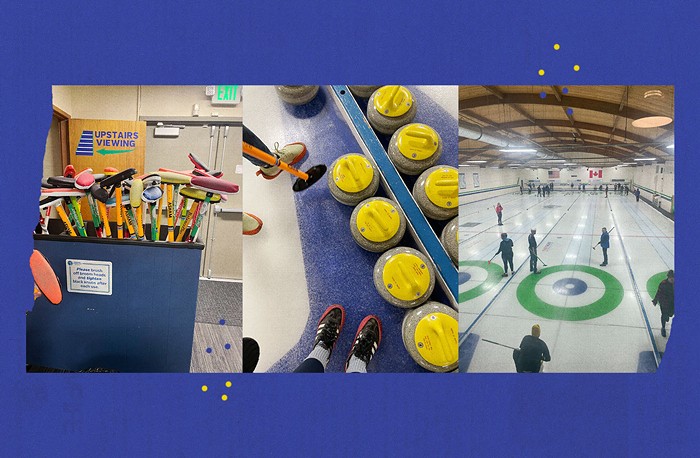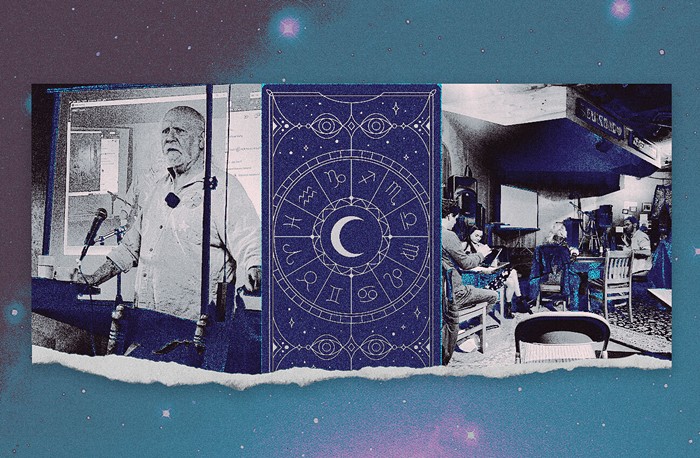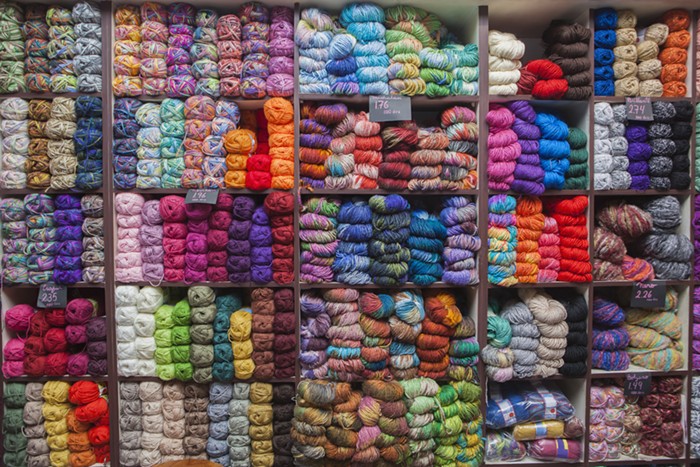As it turns out, the world of Irish dance is more complicated than just Macklemore waving an Irish flag in a trench coat. I learned this lesson as I tried to jig, tap, and step alongside the Seattle Irish Dance Company (SIDC) during the “two weeks of Irish-dancing craziness” ahead of St. Patrick’s Day, as SIDC founder Carlye Cunniff put it.
These weeks mark the busy season for these kinds of Irish dancers, who typically only perform at cultural events such as St. Paddy’s festivities and the annual Celtic Music Feis in Ocean Shores, a "feis" I didn't know about until last week. This week, SIDC has a full slate of performances around Puget Sound.
As part of my new column, Play Date, where I explore Seattle's subcultures, I wanted to know who these fleet-footed dancers were and why they devoted their time to this form of dance that most people only know from that one scene in Titanic.
At a three-hour rehearsal on Saturday morning and a subsequent (impromptu) performance at Kells Irish Pub that evening, what I discovered was a tight-knit dance company with a soul more inviting and more fun than mainstream, competitive Irish dance.
One Problem: I Don't Dance
At rehearsals, Cunniff suggested I warm up with her and her six dancers. Looking down at my jeans and clunky boots, I wanted to say no. Not exactly dancing attire.
“Screw it, I’m game,” I said, thinking of this story and the things I must do for journalism.
“But,” I said as the queen of caveats, “I have zero rhythm. The only way I’ve ever moved my body is playing soccer. ”
“That means you’re foot-focused!” Lianne Lahaie, 25, said.
The music started with a flurry of fiddle, and we were off—stretching, side-stepping, toe-tapping. Well, some of us were off. Others of us were tripping over our own feet.
“Don’t worry, it’s hard for us, too,” Lahaie whispered to me. I appreciated her lies.
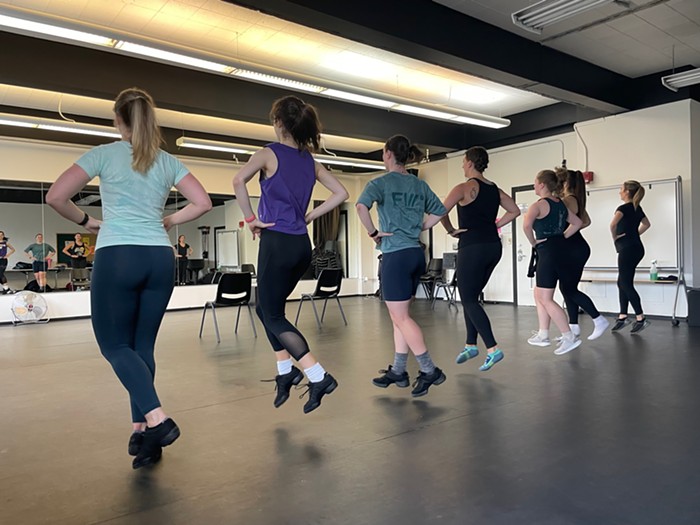
When the warm-up ended, the real (or, reel, heh heh) dancing started. The dancers floated across the practice room with high kicks and quick steps like galloping upright horses. Some wore their hard shoes, which made nice clackity sounds. Some wore socks to glide as they would in their soft performance shoes. Cunniff danced in bare feet. Their feet moved fast, but their upper bodies stayed mostly still.
The music stirred something in me. Maybe the fiddle reminded me of Howard Shore’s “Concerning Hobbits,” or maybe the quaint, folksy tune hit on a particularly pastoral nucleotide in my DNA. I grew almost misty-eyed observing the rehearsal, especially when I saw Cunniff smiling through every step and heel-click.
Scandals, False Assumptions, and Riverdance
One assumption you might make about Irish dancers turns out to be false. “Are you Irish?” I asked nearly all the dancers, and each one gave an answer that amounted to “somewhere far back in the family tree.”
“Everyone always asks about Irish heritage,” one of the dancers said, “but I’m just here because my mom saw Riverdance.”
Apparently, Riverdance is the universal gateway drug. Cunniff also started taking classes after her mom watched Riverdance in the 1990s.
For years, she did so competitively, even going toe-to-toe against one of her current dancers, Kristina Gallant, 35, as a teenager. (They now have matching shamrock tattoos.) And yet, Cunniff never truly enjoyed competition. She didn’t like the judgment and the rules telling her what was and wasn’t Irish dance.
Seeking a more-relaxed, performance-centered alternative, in 2012 Cunniff created SIDC. She was only 24 years old.
SIDC is more like Riverdance. Competition is more technical and, well, more competitive. It's also mired in controversy.
Recently, scandal "rocked the world" of competitive Irish dancing. In December 2019, reports of child abuse at the hands of Irish dance teachers circulated after plaintiffs in New Jersey filed three civil lawsuits. Then, in October 2022, news of a cheating scandal broke in a flood of juicy WhatsApp text screenshots.
Gallant and Lahaie told me their own Irish dancing group chats went crazy that day.
“It’s been this open secret,” Gallant said about the cheating. “And it finally came out.”
“We are vocally not involved in competition,” Cunniff said of SIDC, “we are integrated with musicians in the Irish music scene and the Irish dance scene that is not competition.”
Stark-Raving Plaid
Later that evening at a packed Kells, I sat with Cunniff, Gallant, Lael Wentland, 29, and Sarah Baresh, 26, one of the newest members of SIDC. In a matter of minutes, a once-local Celtic rock band called Stark-Raving Plaid would start playing, and the dancers would also perform. They wore street clothes, not their typical performance garb.
“Dancing in a pub versus a stage makes people nervous because there’s very little control,” Cunniff said. “We don’t know what the band is going to play, we don’t know when to stop. I personally love that. It’s my favorite thing.”
Wentland described these types of dances as “jams.” A few years back, when she was living in Vietnam, she found an Irish band and started dancing in bars while they performed. She'd strap planks of wood to the back of her motorbike, drive all over the city, and do jigs on her makeshift dance floors.
“People went wild for it,” Wentland said.
The energy from a bar performance is unparalleled, Cunniff explained. The experience is the rawest form of the dance, she added—pure joy, no rigor, and low stakes, thanks to an audience that's often drunk.
“The idea makes me crazy,” Baresh said of the casual affair. This was her first pub dance. Growing up, she learned Irish dance from Cunniff “for fun.” Her main emphasis, however, was ballet and modern dance. Having earned her Bachelor of Fine Arts in dance, what she knows best is structure and routine.
Studying a setlist written on a bar napkin, Baresh vibrated with nervous energy.
“Nobody will know if you mess up,” Cunniff assured her.
Then, they hopped up and surprised the crowd with a professional dance. They click-clacked across the floor, the rhinestoned buckles on their hard shoes glittering. The crowd roared.
I was content to sit back and watch, but when Stark-Raving Plaid started up another reel, Cunniff grabbed my arm and said, “C’mon, now’s your chance!” She pulled me to the front of the room.
“Do what we did in the warm-ups,” she said.
She held my arm and did the steps next to me. My cheeks burned. I shuffled along beside her, tangling up my feet. And yet, the crowd kept cheering and the band kept playing. She pulled me into a circle as the music swelled and we skipped around with each other, arms connected at parallel right angles. My feet were probably supposed to be doing something other than skipping, but it didn't matter. When we sat down, Cunniff beamed at me.
“That was great,” she said. And even though I knew it wasn’t great—or even technically Irish dance—I felt giddy. It was fun.
The dancers ordered beers as their nerves settled. They amended their setlist and adjusted their routines in the spaces between dances. Drunk Irish men came up to our table and asked if we were Irish. A woman asked for a picture with the dancers. Stark-Raving Plaid peddled their CDs.
“Only a Celtic rock band would still be selling CDs,” Cunniff laughed.
Any ideas on which Seattle subculture I should explore next? Want me to tag along with you on your favorite hobby or pastime? Send me tips at playdate@thestranger.com.
